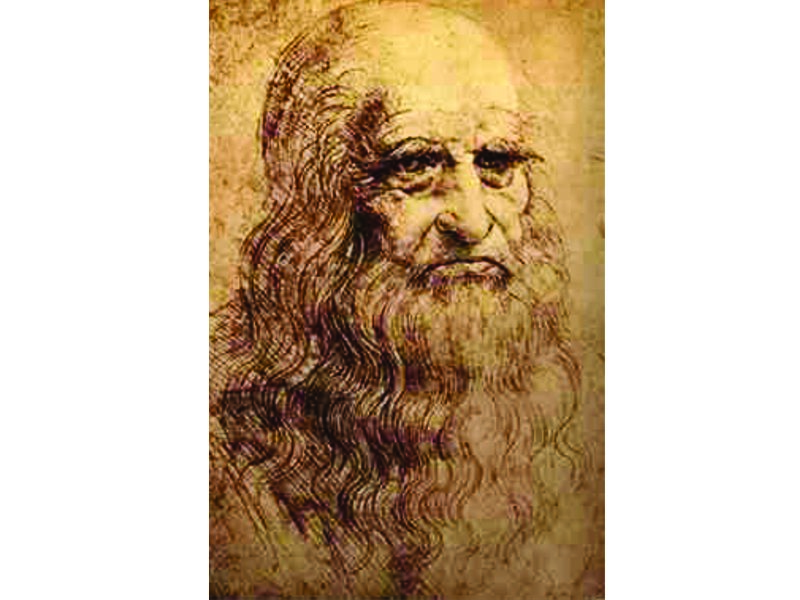
Science and art may be polarised entities, but that is not to say the former can’t help sustain the latter. Painter extraordinaire Leonardo da Vinci’s portrait, which dates back to the early 1500s, can now be saved using a new scientific technique. Extra(rt)ordinary, don’t you think?
Drawn with red chalk on paper and largely considered to be da Vinci’s self-portrait, the work had been fading. Centuries’ worth of exposure to environmental wear and tear has caused yellowing of its paper. The new analysis could help preservationists assess the damage to the painting and, subsequently, help them decide what restoration techniques can be used to salvage da Vinci’s work, reported NBC News.

Researchers from Italy and Poland, according to the Hindustan Times, have developed a technique to non-destructively identify the concentration of chromophores, which cause yellowing of the paper. “During the centuries, the combined actions of light, heat, moisture, metallic and acidic impurities and pollutant gases modify the white colour of ancient paper’s main component: cellulose,” commented Joanna Lojewska, who is a professor in the department of chemistry at Jagiellonian University in Krakow, Poland.
The portrait, which is likely to have been completed in Turin, Italy between 1510 and 1515, has sparked speculation for centuries. While some believe that the portrait is that of da Vinci’s (he was in his 50s during the time), some experts hold that the drawing is of his uncle or father (as it depicts a man close to 80 years of age).
For multiple decades in the 20th century, the portrait was framed and displayed for the public, where it was exposed to sunlight, the study’s co-author Mauro Missori said. Owing to consequent corrosion, it has been locked away in a temperature-and-humidity-controlled vault at the Royal Library of Turin since the year 1998.
In 2012, the study’s authors got the chance to inspect the portrait. They quantified the level of chromophores and drew a comparison between modern and ancient pieces of paper that have been in contact with various conditions.
The findings unveiled that the type of chromophores in da Vinci’s self portrait are “similar to those found in ancient and modern paper samples aged in extremely humid conditions or within a closed environment, which agrees with its documented history,” as Missori stated. The results were published in the journal Applied Physics Letters.
Following their preliminary examination, the team will be doing another analysis to see whether the painting is continuing to degrade or its corrosion has stabilised now. Despite reservations surrounding present-day methods of preservation, attempting to reduce the damage caused to the portrait could be a step in the right direction.
Published in The Express Tribune, June 5th, 2014.
Like Life & Style on Facebook, follow @ETLifeandStyle on Twitter for the latest in fashion, gossip and entertainment.

1722586547-0/Untitled-design-(73)1722586547-0-165x106.webp)


1732326457-0/prime-(1)1732326457-0-165x106.webp)
1732308855-0/17-Lede-(Image)1732308855-0-270x192.webp)











COMMENTS
Comments are moderated and generally will be posted if they are on-topic and not abusive.
For more information, please see our Comments FAQ